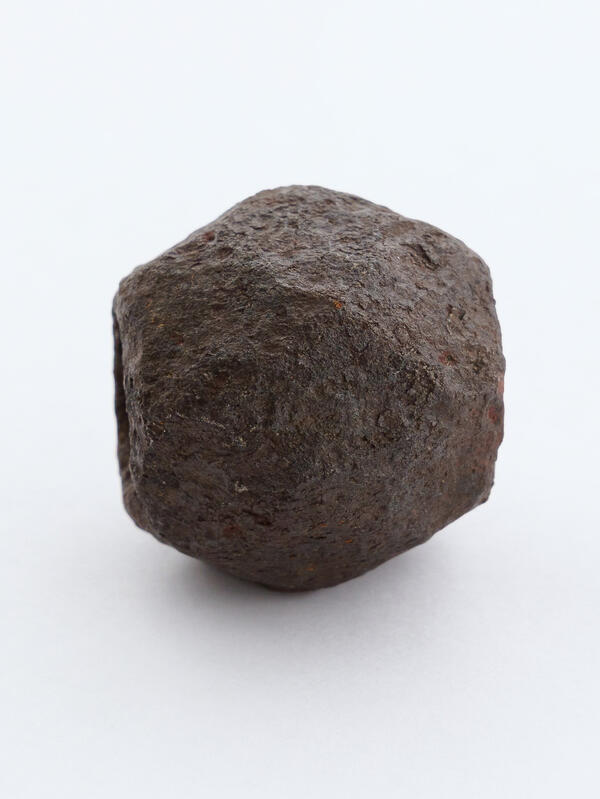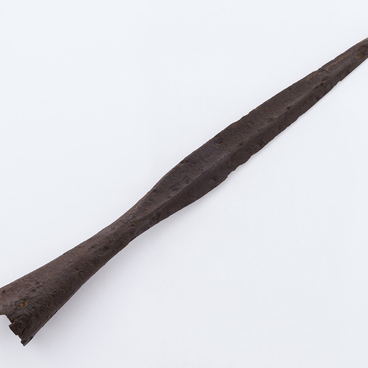The mace on display in the museum’s main hall, “Rus and Horde: 14th Century Warfare”, is part of the set of offensive arms used by warriors in the 14th and 15th centuries. It is made of iron and has a cuboid shape.
The mace was a blunt, hand-held cold weapon with a round head that weighed up to 500 grams and was mounted on a wooden or metal handle measuring up to 80 centimeters in length. In battle, its purpose was to either stun the enemy by striking their helmet or cause internal injuries.
Structurally, the mace consisted of a head and a wooden handle, which could be equipped with a lanyard at the bottom to prevent it from flying out of the user’s hand during combat. This was necessary because when hitting an opponent wearing armor there was a strong recoil.





